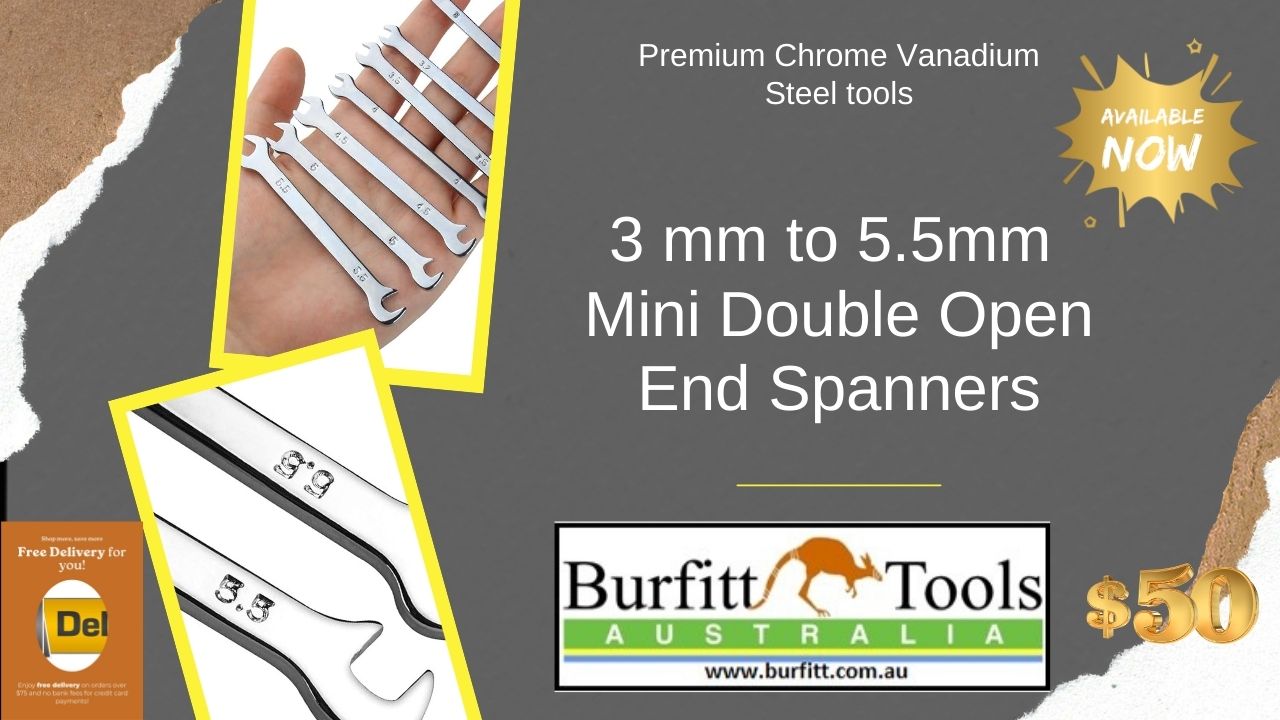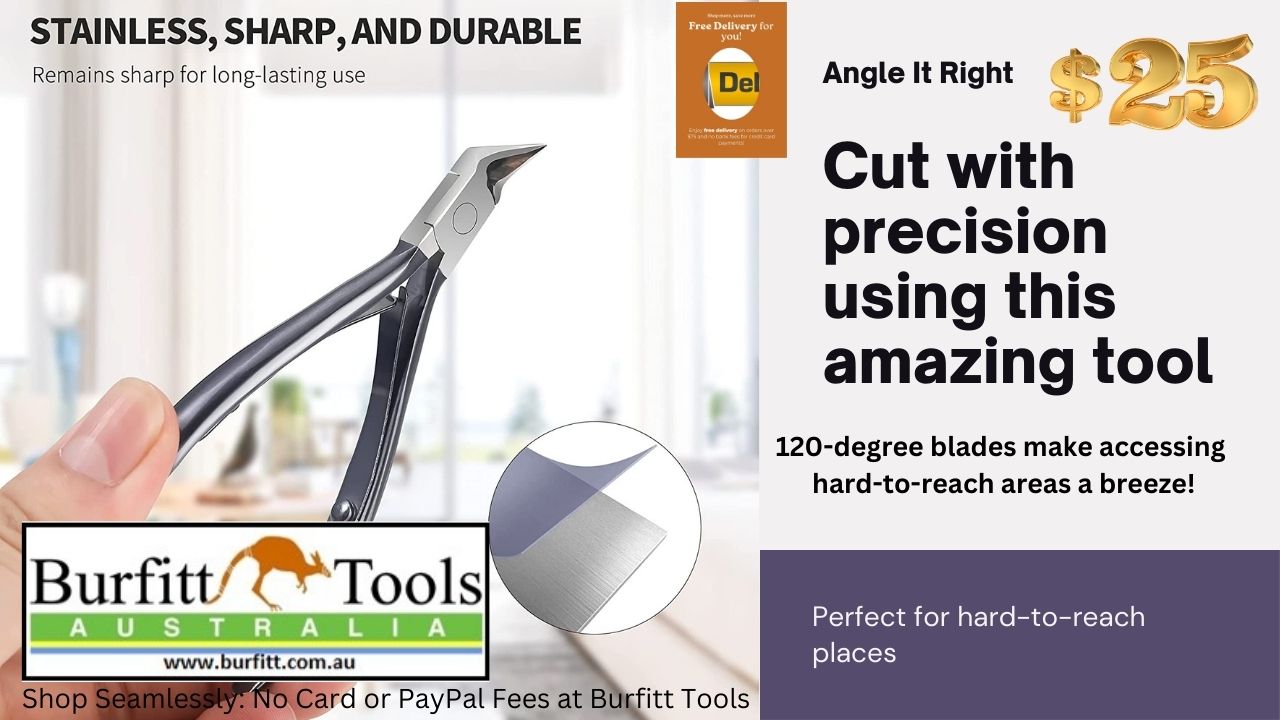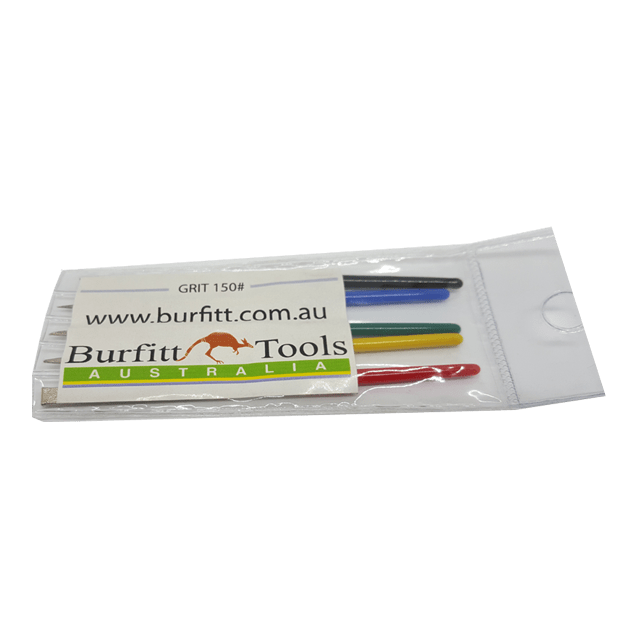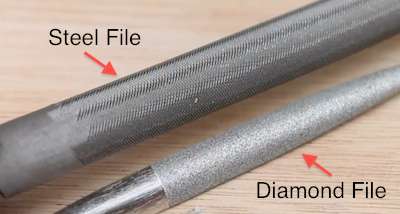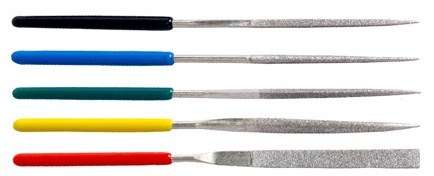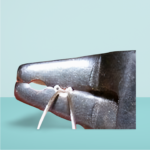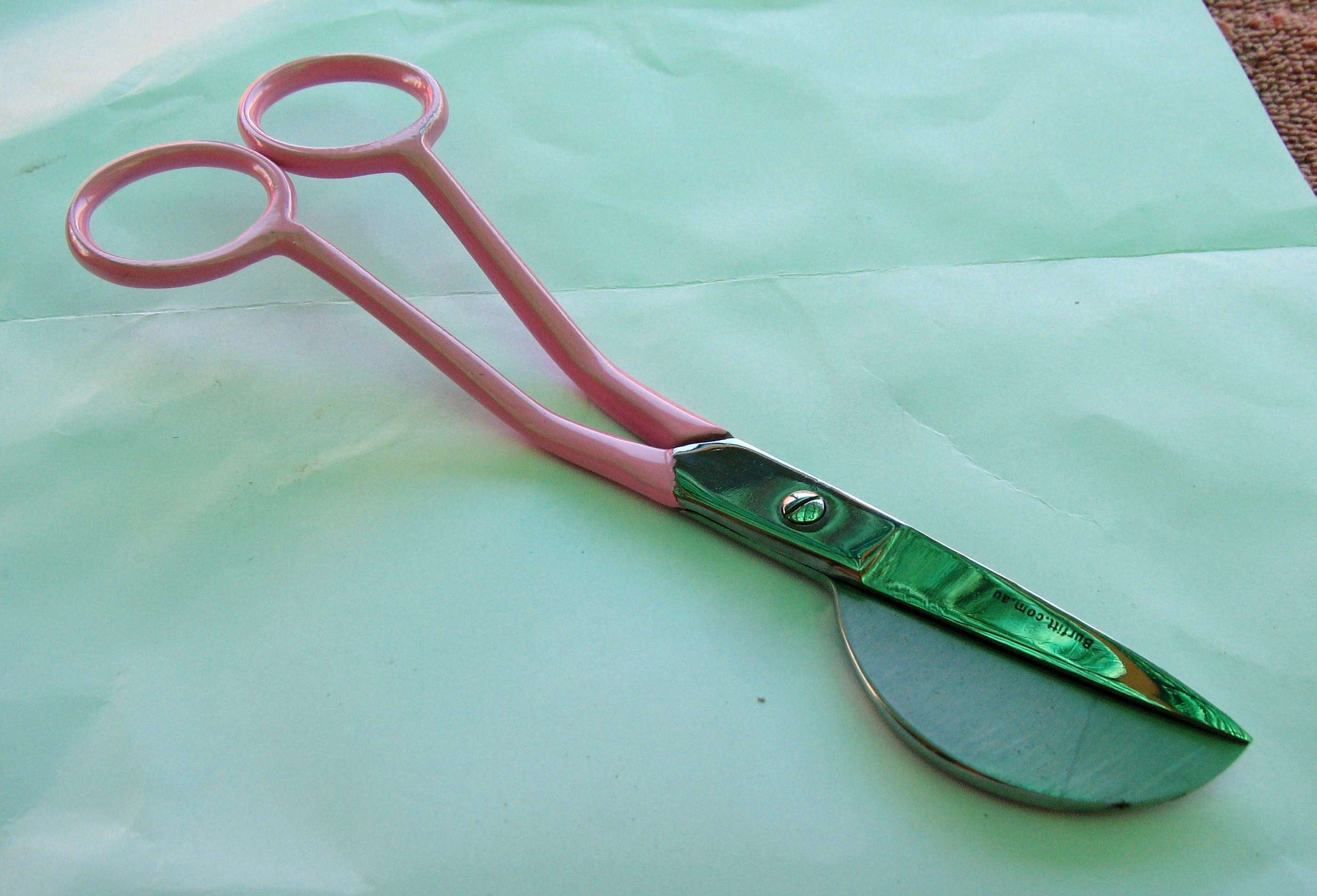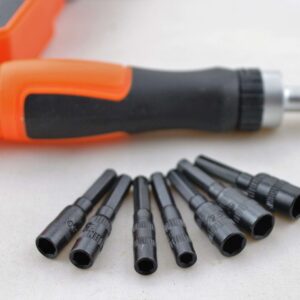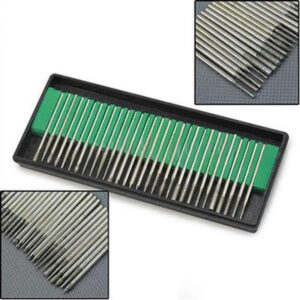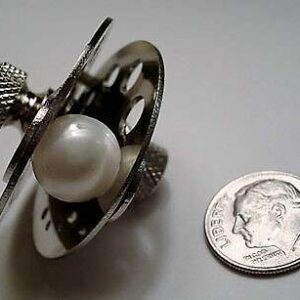Quality Diamond File Small Set 320 grit
Is a high quality diamond modelling tool. It is long lasting, durable and very hard wearing.
It is an excellent product that can be used for modelling applications such as jewellery, sculpture, model making and many other similar applications.
Diamond files are very versatile, they are used in filing, grinding, deburring and polishing metal, wood or plastic.
The diamond files come in 5 degrees of grit depending what you’re working on the 150 grit is the most aggressive 320 medium applications and to finish off a project the fine 600 grit ,800 and 1000 grit .
Used on stones metals and plastics. Ideal for intricate filing especially on small plastic model projects 5 Shapes for dealing with various shapes and contours
Why Use a Diamond File instead of a Traditional Steel File?
As you know traditional steel files have teeth rather like a saw blade. The smaller the teeth, the finer the cut of the file, but all these teeth are lined up in the same direction. So this means that with a traditional file it will only cut in one direction like a saw.
Even when you have a round or half round file, they still only cut in a forward direction. They don’t work sideways or in a circular motion, for example.
In contrast Quality Diamond File Small Set 800 grit
don’t actually have teeth as such, but diamond grit. This gives diamond files the unique property in that they will work in any direction.
Quality Diamond File Small Set 320 grit cut in all directions, produce a better finish
The distribution of particles enables the diamond needle file to not only cut in all directions but also produce a much better finish. Therefore diamond needle files can offer a fantastic abrasive for a variety of applications.
Due to the hardness of
Quality Diamond File Small Set 320 grit
can be used on a variety of materials that other abrasives will not have an impact upon.

Diamond Files cut on the pull stroke as well as the push stroke
When you’re working in small intricate areas the file will work on the pull stroke just as effectively as it does on the push stroke. So this may make it slightly easier in confined spaces.
Quality Diamond File Small Set 320 grit
It also means in theory that it will cut twice as fast as a toothed file of the same grit because it’s cutting on the pull as well as on the push stroke.
Another huge advantage is the fact that they also work sideways and with a twisting motion.
How to Use Quality Diamond File Small Set 320 grit
1. Use the tip of a file for detailed areas such as ring shanks
You can use the fine tiny points of the files to get into tiny areas. As long as you can move the file in any direction, it will cut and it will file for you. This is particularly useful with a large round 600 grit diamond file as it can be rotated inside a hole or outside a ring, and it will cut in 360 degrees.
Great for the inside of ring shanks and also for deep burring. A large half round 220 grit file is also great for the inside of rings and bangles and it has a nice wide flat profile so that can be used on the outside of rings without changing files. A great companion to the 600 round file.
2. Sharpening carbide cutting tools
Over time tungsten carbide cutting tools will dull and it is often easier to have a hand tool abrasive that you can take straight to the cutting tool, rather than having to take a cutting tool to an electric grinding wheel. 600 grit diamond files are the best grade for this application.
3. Enlarging holes
A round needle file can be used for opening up a huge array of holes in hardened surfaces, 600 grit being the most common for most applications. Small screw holes in watches and clocks to holes in jewels and beads can all be opened up with a round file. Choose files that are either 600 or 900 grit for the best results.
here is another quality sander you would like Top Quality No.1 Sanding cleaning block
4. Removing excess solder
If you solder a post onto the back of an earring, for example, a square 600 grit diamond file will help you get right into that solid joint and clean up both the horizontal and vertical surfaces. It also has a very nice sharp point. A round diamond file can be used for removing excessive solder inside a ring band and the finish is finer than what you would achieve with a traditional ring file.
5. Fitting clock and watch glasses
Sometimes when fitting watch or clock crystals the sizes need to be altered slightly, the use of a 600 grit diamond needle file will produce the required result in minimal time.
6. Refacing clock & watch pallets
Clock and watch pallets are very hard and become burred and mis-sharpen over time. The use of a 900 grit fine diamond file can radically change the surface of the pallet for a more efficient movement.
Above image shows Brad Taylor of taylorhorology.com using a 900 grit small square diamond file
7. Shaping precious stones for jewellery
Precious stones can be extremely hard, especially quartz, sapphire and ruby, and when setting stones into jewellery small alterations may be required. No other abrasive will have such an effective impact as a diamond needle file. Fine grades such as the 600 and 900 grit are ideal for making these small adjustments. Try a small flat 600 grit file, or a small half round 900 grit for superfine finishes.
Lucylou designs uses a diamond file to shape and smooth her cabochons, as seen above.
8. Repivoting clock and watches
Removing the burrs and wear from pivots is often difficult due to its hardness, especially in French clocks. The use of a 600 grit diamond needle file can have the pivot running smoothly in no time at all.
9. Bevelling cut crystal glasses and filing glass

We all know it is very easy to chip the rim of your precious crystal glass and due to the cost of replacing one in a set, using a needle file can be far more economical to bevel the lip of the glass. It is essential that a 600 grit file is used and half round shape is by far the most versatile for the contour of the glass.
The above image shows a glass bottle that has been cut, the edges of which are being filed down with a large square 600 grit diamond file.
Quality Diamond File Small Set 320 grit are great for filing the edges of mosaic pieces as well
10. Sharpening household objects
Scissors, penknives, garden tools, kitchen knives, small screwdrivers, guitar and violin strings can all be sharpened to a razor sharp finish in very little time. You can use various sizes of diamond file for this application but a 600 grit is recommended.
11. Cross graining burnishing tools
Over time burnishing tools lose their burnishing ability, only diamond files can re-address the cross grain of a sapphire burnisher or hardened steel burnisher. Opt for the 600 grit for the best results.
12. Sharpening fishing hooks and ice screws for winter climbing
One of the most important tools of an angler has to be his hook and in carp fishing in particular this has to be razor sharp (sticky sharp) The use of a Flat 600 grit diamond needle file is ideal for this due to its size and profile. It is very important that the very hard to find diamond escapement file is used for this operation, this allows dexterous filing all around the hook point.
See also this tool a good addition to your workshop Mini Saw Frame with Alluminium Handle miniature saw frame
How to Clean Diamond Files
Where possible, always use your diamond files wet as this will help debris from becoming lodged in the diamond grit. If you still find material clogging up your diamond file you can try any number of
the following:
The diamond files come in 5 degrees of grit depending what you’re working on the 150 grit is the most aggressive 320 medium applications and to finish off a project the fine 600 grit ,800 and 1000 grit . Used on stones metals and plastics. Ideal for intricate filing especially on small plastic model projects 5 Shapes for dealing with various shapes and contours.

